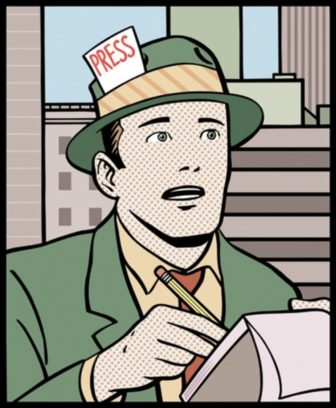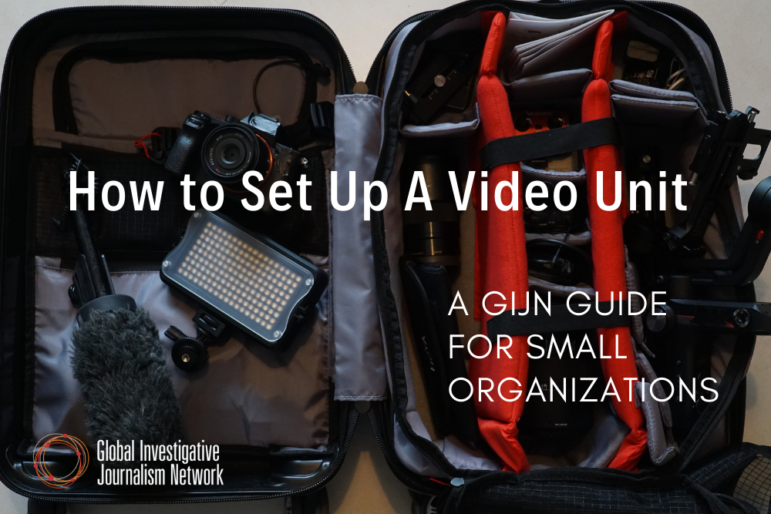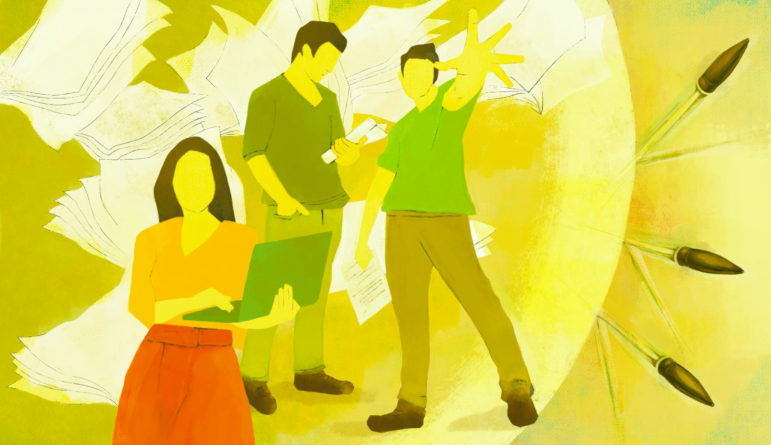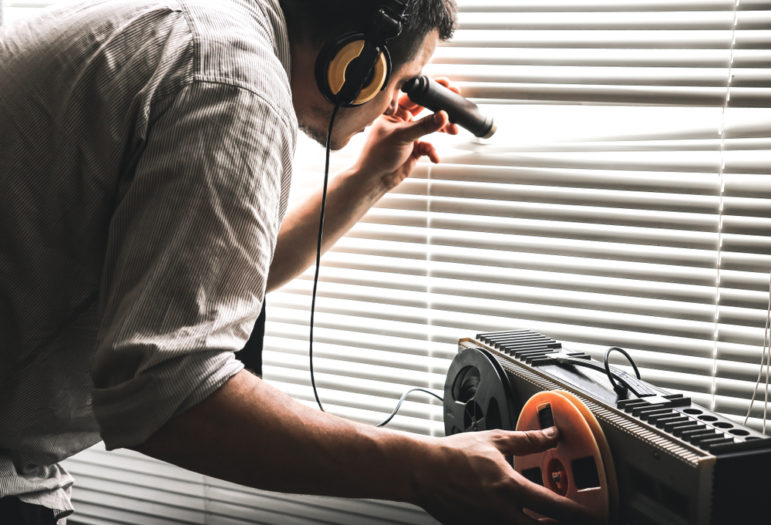

Perspectives on Interviewing Techniques
 Advice on the subject of interviewing comes in many flavors — not only for investigative journalists, but for police officers, employers, lawyers, social workers, and others. What’s clear is that the interview is one of the most trusted and effective tools in the investigator’s toolbox.
Advice on the subject of interviewing comes in many flavors — not only for investigative journalists, but for police officers, employers, lawyers, social workers, and others. What’s clear is that the interview is one of the most trusted and effective tools in the investigator’s toolbox.
GIJN has prepared a sampling, mainly from journalists, but with a smattering of advice from others, too.
There’s plenty of useful material. The word “art” appears a lot, as do the words “preparation” and “listening.” And more. We found lists containing four tips, 20, 30 and 40.
Advice from Journalists
María Emilia Martin, a pioneering public radio journalist, wrote the chapter on interviewing in the Reporter’s Guide to the Millennium Development Goals: Covering Development Commitments for 2015 and Beyond that has long been a well-read feature on GIJN’s website.
Suggestions on conducting interviews over Zoom were provided by Marie Naudascher in Multimedia Journalism.
Conversation techniques and interview questions that bore into complexity are described in this 2019 article by Solutions Journalism which keys off an essay by author and reporter Amanda Ripley about what journalists could learn from mediators, lawyers, rabbis, and others “who know how to disrupt toxic narratives and get people to reveal deeper truths.”
Top Tips on Investigative Television Interviews, by Oriana Zill, a CBS News producer, who spoke at GIJC19.
Mark Schoofs, investigations and projects editor for Buzzfeed News, presented The Art of Interviewing at GIJC17 in Johannesburg in November 2017.
“Investigative Interviewing” is Chapter 11 in Modern Investigative Journalism by Mark Lee Hunter and Luuk Sengers, with Marcus Lindemann.
Asking the Right(!) Questions, Chapter Seven, The Investigative Journalism Manual, a 2010 project of the Global Media Programmes of the Konrad Adenauer Stiftung (KAS).
“Learn the rules, then break them,” begins a guide to mastering the investigative interview based on an interview with Julian Sher, a producer of the CBC’s The Fifth Estate, and published by Investigative Reporters & Editors.
The craft (and art) of the interview, from thoughtful homework to whatever happens, a 2018 article by Sally James on Nieman Storyboard, with the subtitle, “Four field reporters share their best tips for effective interviews.”
No surprises: Transparency and the art of the investigative interview, is a tip sheet done by Karen de Sá, investigative reporter for the San Francisco Chronicle, and T. Christian Miller, senior reporter for ProPublica. It was presented at a 2018 Investigative Reporters & Editors conference.
Interviewing Techniques, a handbook by the Centre for Investigative Journalism in the UK, includes a section on “adversarial interviewing.”
“Asking the Hard Questions About Asking the Hard Questions,” is the subtitle of a Columbia Journalism Review article by Ann Friedman.
5 interview tips every journalist needs, by Dana Liebelson for IJNet, includes a section on email interviews.
This Knight Center article summarizes advice from a variety of sources, with many links.
The BBC Academy has a collection of materials about broadcast interviewing from a variety of BBC journalists.
30 Tips on How to Interview Like a Journalist is full of ideas from David Spark, a journalist and producer.
Interviewing is one of the key the skills for investigative journalism covered in an article by written by Gordana Igric, regional director of the Balkan Investigative Reporting Network.
How Journalists Can Become Better Interviewers, a Poynter Institute article by Chip Scanlan, elaborates on these themes: get smart, craft your questions, listen up, empathize, look around, capture how people talk, establish ground rules and “be a lab rat.”
In Essential Tips for Interviewing Children, Washington Post reporter John Woodrow Cox advises: “Be human first. Do as much pre-reporting as possible. Find out what questions the child has been asking. When possible, immerse. Make them comfortable. Leave them in a good place. Verify what they’ve told you. And don’t underestimate them.”
Renowned US National Public Radio interviewer Terry Gross was interviewed in 2018 about her technique.
Interviewing Victims
Special care is needed when interviewing victims. Advice on this score is included in GIJN’s resource page on human trafficking. It includes guidance from Associated Press reporter Martha Mendoza and Malia Politzer, both award-winning journalists on human trafficking.
Advice for Reporters Working with Survivors of Child Abuse is the headline of an article summarizing a panel held at the 2019 GIJN conference in Hamburg. Three main points:
- Build trust with survivors.
- Take care of the well-being of your sources.
- Survivor communities can help you and help each other.
Trauma Reporting: A Journalist’s Guide to Covering Sensitive Stories This 2019 book by Jo Healey is described in this article by the author.
A guide from the NGO Project Reach includes cautions such as: “Be aware that changes in memory do not necessarily indicate falsehood or storytelling, but may be evidence of a trauma response.”
Suggestions geared for journalists were prepared by Minh Dang, a California-based consultant on human trafficking, who lists five guiding principles. A survivor of child sex trafficking, Holly Smith, wrote about the importance of building rapport and trust.
Particular advice on interviewing women and children is included in The Toolkit to Combat Trafficking in Persons from the United Nations Office of Drugs and Crime (UNODC). Also useful on interviewing and other topics is the UNODC’s Anti-Human Trafficking Manual for Criminal Justice Practitioners. The World Health Organization has contributed Ethical and Safe Interviewing Conduct.
10 rules for reporting on war trauma survivors are from The War Horse, a nonprofit news publication focused on covering war, trauma and veterans’ affairs in the post-9/11 era.
Tips from Related Fields
From forensic accountants
Investigative Interviewing Techniques is geared toward all kinds of interviews but there are lessons here for journalists, and is prepared by Christopher Haney and Andrea Roller of Duff & Phelps, a US firm providing of financial advisory and investment banking services.
From a certified fraud examiner
A checklist by Dawn Lomer, managing editor at i-Sight Software, with a focus on fraud.
From the law enforcement community
Investigative Interviewing includes substantial course material from the College of Policing, a professional body for the police in England and Wales.
Interviewing the FBI Way is an article that relies on information from the retired FBI Special Agent Joseph Stuart.
From a business school professor
Interviewing white-collar criminals: 6 tips from Harvard Business School’s Eugene Soltes
And back to a journalist
How to Interview Like a Journalist (No Matter What Your Job Is), a clever title for a nice summary by Crew editor Jory MacKay.









